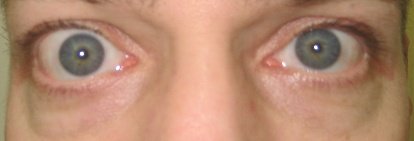“Celiac disease is common and is associated with other immune diseases,” says an article in the Canadian Medical Association Journal (CMAJ January 8, 2013).
The symptoms of celiac disease are triggered by gluten (a protein found in wheat, rye, barley and triticale) in people who are genetically susceptible. Triticale is a hybrid of wheat and rye first bred in laboratories during the late 19th century.
Ten things to remember about celiac disease as summarized from the CMAJ article:
- A first-degree relative with celiac disease has a 10-fold increased risk of acquiring the condition. It affects one in 133 North Americans.
- The risk is increased among people with autoimmune thyroid disease (three to five per cent), type one diabetes mellitus (five to 10 per cent) and Down syndrome (5.5 per cent).
- Gluten perpetuates the destruction of villi in the small intestine. Intestinal villi are small, finger-like projections that help in digestion.
- The disease can develop at any age.
- Clinical symptoms can be diverse from abdominal pain to diarrhea, weight loss and malnutrition.
- Screening for celiac disease is recommended for people who have associated symptoms, an associated condition or a family history of celiac disease.
- The most widely available test is the tissue transglutaminase IgA antibody test, which has an estimated 95 per cent accuracy rate. If antibody testing is negative and celiac disease is suspected, the IgA level should be measured.
- All adults with an abnormal screening result should undergo a small-bowel biopsy to confirm the diagnosis of celiac disease.
- Because of an increasing awareness of celiac disease, people may choose to adopt a gluten-free diet before diagnostic testing. That is not the right way to manage the problem. Further diagnostic testing should be performed following a medically supervised gluten challenge of at least four weeks, with sufficient gluten to produce symptoms.
- Treatment is lifelong adherence to a gluten-free diet. Examples of gluten-free grains are oats, buckwheat, millet, rice and quinoa. Gluten-free diet reduces the risk of complications such as osteoporosis and intestinal lymphoma.
Is there an illness called non-celiac gluten sensitivity?
Yes. You have symptoms of celiac disease but it cannot be confirmed. Then you may have non-celiac gluten sensitivity.
An article by Sapone et al. (BMC Medicine 2012) titled, “Spectrum of gluten-related disorders: consensus on new nomenclature and classification,” says in only 10 years, key milestones have moved celiac disease from obscurity into the popular spotlight worldwide.
What has generated more interest is the spectrum of illnesses associated with ingestion of gluten. These are: 1. Allergy to wheat 2. Autoimmune celiac disease, dermatitis herpetiformis and gluten ataxia 3. Possible immune-mediated gluten sensitivity.
Research estimates that 18 million Americans have non-celiac gluten sensitivity. That’s six times the amount of Americans who have celiac disease. Researchers are just beginning to explore non-celiac gluten sensitivity.
These individuals seem to be sensitive to gluten often also experience headaches, rashes and fatigue. It is possible that it may in fact be other proteins or sugar in wheat (other than gluten) that may be triggering the reaction. There is no inflammation or damage to the intestinal lining as in celiac disease. More research is needed to understand this problem. Did I hear you say, “If only things in life would be simple and straight forward?”
Start reading the preview of my book A Doctor's Journey for free on Amazon. Available on Kindle for $2.99!

